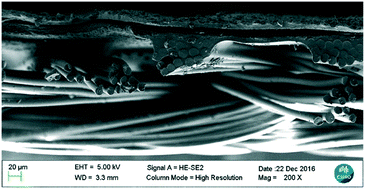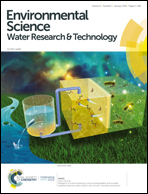Depletion of VOC in wastewater by vacuum membrane distillation using a dual-layer membrane: mechanism of mass transfer and selectivity†
Abstract
In this paper, volatile organic compound (VOC) removal by vacuum membrane distillation with a dual-layer membrane was studied. The mass transfer mechanism and VOC selectivity of the dual-layer membrane for VOC removal were compared with that of the PTFE membrane, for which the separation relied on the liquid–vapour equilibrium of VOCs in water. The VOC mass transfer across the dual-layer membrane could not be completely described by Raoult's law, which is applicable for the performance of the PTFE membrane. The maximum VOC selectivity of the dual-layer membrane was about 4.6 times that of the PTFE membrane. It is proposed that the increase of organic selectivity is related to the reduced water content in the hydrophilic polyurethane layer, in which organic adsorption decreased the hydrophilicity of the pores. The VOC selectivity of the dual-layer membrane declined as the vacuum pressure and/or temperature increased due to the linear/exponential increase of water flux and almost constant organic flux. The dual layer hydrophilic–hydrophobic membrane swelled slightly when in contact with the synthetic organic solution during the membrane distillation (MD) process but showed good resistance to wetting, which is an important feature for practical application of the membrane for treatment of wastewater containing volatile organic compounds.



 Please wait while we load your content...
Please wait while we load your content...